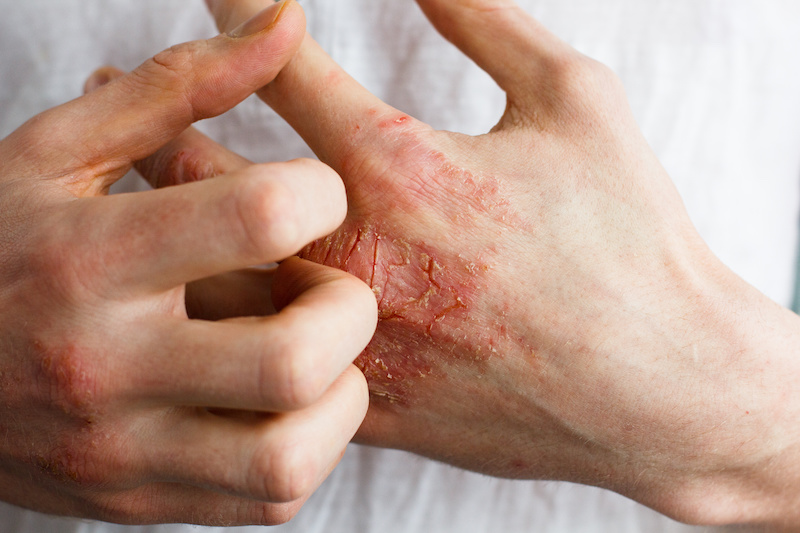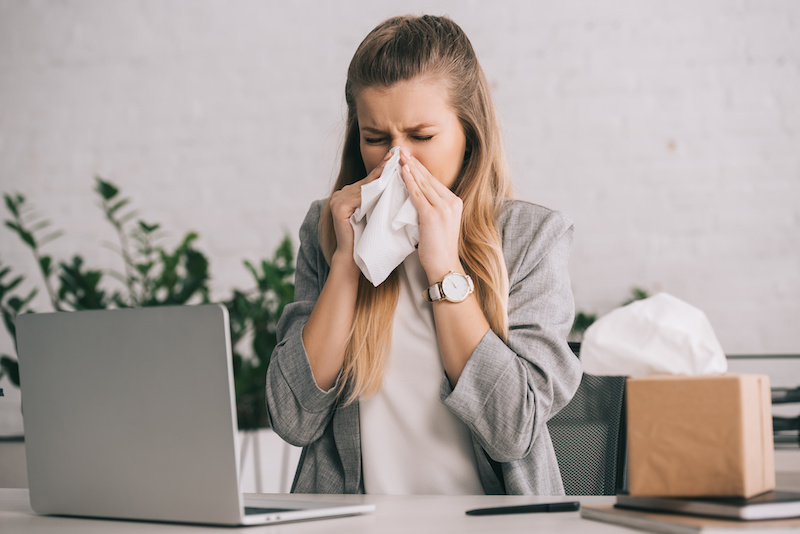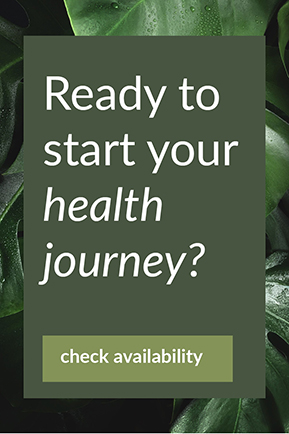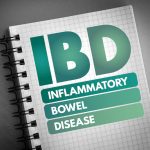When discussing food intolerances, the main culprits are often considered to be dairy, soy and gluten, but lesser-known foods and food substances can also cause huge issues to health. Histamine is a relatively common culprit when it comes to food intolerances, and one which many people have never heard of! Whilst histamine intolerance is certainly lesser known than other food intolerances, it’s believed around 1% of the population suffer with histamine intolerance, 80% of whom are middle-aged. But what is histamine, what kind of foods contain it, and what does histamine intolerance look like? In this blog we delve into all things histamine, looking at the consequences of histamine intolerance on health, common conditions that can be associated with histamine intolerance and histamine overload, as well as strategies for reducing your histamine intake.
So, what exactly is histamine?
Histamine is an important molecule in the body that is involved in immune, allergy and inflammation pathways. It is a type of biologically active amine (also known as a “biogenic amine”), a group of many different amino acids that cause physiological changes in the body. There are receptors for histamine spread throughout the body, including in the gastrointestinal tract and even in the brain, as it exerts effects in many different body systems. Its role in the body is complex, and different types of histamine receptors in the body lead to different outcomes, as histamine often plays a regulatory role in different body systems.
One of the main producers of histamine in the body are our mast cells, a type of immune cell that responds to germs and sites of infection by releasing histamine, triggering inflammation and an immune response that helps the body to fight bacteria and other pathogens. Mast cells are also triggered to release histamine in response to allergens (e.g. food, pollen, etc.). It is histamine that causes the classic signs of allergic reaction – watery eyes, itchy skin, and a runny nose – because it causes our blood vessels to dilate. It is also responsible for more serious anaphylactic allergic reactions. In addition to causing the symptoms of allergic reactions, histamine is an important part of our innate immune system, is involved in neurotransmitter release, and may even play a role in ovulation (as well as implantation, uterine contractions, and even lactation). Despite its bad wrap, it is an essential part of our body’s normal functioning. It’s only when histamine accumulates in excessive amounts that issue arise.
As well as being released in response to exposure to allergens, the release of histamine in the body can also be triggered by other factors, including:
Oestrogen
- This is why histamine intolerance symptoms can be worse at certain points in the menstrual cycle when oestrogen levels are higher, such as during ovulation. (For more info on the link between histamine and oestrogen, check out our blog post here.)
Inflammation
- Histamine is one of the molecules released as part of our normal inflammatory response
Gut bacteria
- Certain types of gut bacteria, such as E coli, produce histamine in the gut
Stress
- Histamine acts as a neurotransmitter in the brain. Higher amounts of histamine are released during periods of both acute and chronic stress (which can contribute to feelings of anxiety)
In addition to being made by our cells, histamine is also found in certain types of common foods, particularly fermented foods. The histamine found in foods is due to bacteria breaking down amino acids (from protein) through the process of fermentation. This is why fermented foods and drinks (including beer and wine) can be particularly high in biogenic amines like histamine. Most people can tolerate eating small amounts of histamine because enzymes in our body are able to break down the histamine in our intestines to be eliminated before it causes harm. One of the main enzymes responsible for breaking down histamine is called diamine oxidase (DAO). DAO is continuously produced and secreted by intestinal cells during digestion to breakdown histamine that is ingested with foods, preventing excess histamine absorption. Whilst we all possess enzymes to break down histamine, there is a limit to how much histamine these enzymes can process, a limit known as “histamine tolerance”. If our bodies exceed this limit, we end up in “histamine intolerance”, leading to excess histamine circulating throughout the body and causing symptoms. Those with low levels of DAO, as well as people with chronic gut issues, are more susceptible to the effects of histamine in food, as their body can’t break down sufficient amounts of histamine before it enters the blood stream. Deficiencies in the micronutrients required for producing DAO (particularly B vitamins such as B6 and vitamin C), as well as gastrointestinal conditions such as Crohn’s disease and even dysbiosis/SIBO, can negatively impact on our DAO levels and leave us at greater risk of histamine overload. Recurring hives and chronic allergic-type symptoms are a sign that your histamine levels are too high (histamine overload) or are exceeding the amount your body can cope with (histamine intolerance).
The Role of Histamine in the Body – Allergies, Hay Fever and More
Whilst too much histamine is certainly an issue for our health, histamine is also a vital part of our body’s normal functioning, and is involved in myriad processes, including normal immune and inflammatory pathways that protect the body from bacteria and viruses. Histamine also plays a role in regulating the function of various immune cells, including monocytes, T cells, and other white blood cells and, as discussed above, is the cause of allergic-type symptoms. However, it’s not all inflammation and runny noses when it comes to histamine’s effects on the body. Histamine is also involved in regulating gastric acid secretion, blood vessel dilation, and can even act on the brain as a neurotransmitter. Histamine can also impact on your menstrual cycle and worsen symptoms of PMS.
Because of the wide-reaching impact of histamine in the body, there are a huge number of conditions that are associated with histamine overload in one way or another, including:
- Chronic allergic-type conditions, such as chronic recurrent urticaria (hives) and chronic hay fever
- Skin conditions including eczema, rosacea and acne
- Asthma
- Gastrointestinal conditions, particularly functional conditions such as IBS, non-coeliac gluten sensitivity and functional dyspepsia
- Menstrual conditions including PMS, Perimenopause, painful periods and endometriosis
- Interstitial cystitis (“Painful bladder syndrome”)
- Neuropathic pain, migraine, headaches
- Certain neurological conditions such as narcolepsy, epilepsy, Parkinson’s disease, Alzheimer’s disease, and schizophrenia
Below we look at the role of histamine in some of these conditions more closely.

Histamine and Eczema
Eczema (or atopic dermatitis) is a really common skin condition that affects children and adults alike. Substance P, a neurochemical associated with pain, is one of the key chemicals which induce symptoms of itching in eczema. Substance P sends a chemical message to mast cells in the skin, triggering the release of histamine and increasing inflammation. The link between eczema flares and exposure to food intolerances or allergies has been well established. Emerging evidence suggests that for some patients, who experience food-related eczema flares but in whom food allergy testing comes back negative, it may be histamine intolerance which is worsening their symptoms. In fact, trials of low-histamine diets in patients with eczema have demonstrated marked improvement of eczema symptoms in as little as one week of dietary change.
Histamine and Rosacea
Histamine acts as a vasodilator, opening up blood vessels and leading to flushing of the skin – one of the primary mechanisms leading to symptoms in rosacea. In those with rosacea, excess histamine-rich foods can trigger rosacea flares and skin redness.
Histamine and Acne
Acne is an extremely common issue particularly in adolescents, caused by an overproduction of sebum (oil) within sebaceous glands in the skin and leading to inflammation and infections within the pores. Whilst there is often an underlying hormonal issue triggering acne, recent research suggests histamine may also play a role, as histamine receptors have been identified in sebaceous glands.
Histamine and Hives
Allergic reactions are one of the most well-known effects of histamine in the body, one of the symptoms of which is hives. Whilst hives can be a reaction to known allergens (such as exposure to poison ivy, for example), chronic spontaneous urticaria is a common skin complaint whereby hives occur without a known trigger. A recent study found that a low-histamine diet was able to reduce symptoms of chronic spontaneous urticaria in 75% of people studied, suggesting dietary histamine may be a factor in many cases.
Histamine and Asthma
In asthma, the role of histamine is even more complex. A study from 2016 showed that people with asthma have an altered gut microbiome, with increased levels of histamine-secreting bacteria in their guts. The study found asthma patients to have higher levels of certain bacteria such as E coli and M morganii, both of which are associated with biogenic amine food poisoning.
Histamine and the Brain
Aside from its role in allergic responses and immune system function, histamine also plays an important role in brain functioning. Both neurons (brain cells) and mast cells produce and release histamine in the brain. Within the brain, histamine acts as a type of neurotransmitter, sending signals to control a range of different bodily functions, including regulating our sleep-wake cycles (higher histamine leads to increased wakefulness), hunger and even regulates the release of certain hormones. Histamine acts to suppress appetite and increase the breakdown of fat within the body – this is part of the reason why some older anti-depressants can cause increased hunger and weight gain, as they block the activity of some histamine receptors in the brain. Histamine also acts to regulate certain hormones, including thyroid hormones, as well as oxytocin and prolactin hormones in breastfeeding mothers. Brain histamine levels have been shown to play a role in a number of neurological conditions, including narcolepsy, Alzheimer’s disease, Parkinson’s disease, epilepsy, and even schizophrenia. Histamine has also been found to play a role in neuropathic pain, headaches and migraines. Although the mechanisms for this role is not fully understood, it is believed that the histamine system within the brain may sometimes be a trigger to the onset of migraines.
Histamine and the Gastrointestinal Tract
As well as influencing hunger, appetite and weight gain, histamine is involved in the digestion of food in the stomach. Histamine is one of the main molecules responsible for stimulating the release of gastric acid by parietal cells in the stomach. Neurons that are sensitive to histamine are found throughout the gastrointestinal system, and elevated histamine receptors within the gut have been found in those with food allergy and even irritable bowel syndrome, demonstrating a link between histamine and these conditions. It has also been speculated that histamine may play a role in a number of other gastrointestinal disorders such as non-coeliac gluten sensitivity.
Diagnosis of Histamine Intolerance
Diagnosis of histamine intolerance is difficult due to a lack of standardised tests to assess for histamine load. Instead, assessing for histamine intolerance or overload through a naturopath is likely to be done via a diet diary and food elimination trial. If you suspect you may be experiencing histamine-related issues, it is important to speak with a naturopath before experimenting with food elimination, to make sure you are well supported nutritionally and are able to effectively assess your histamine tolerance, so long term treatment strategies can be prepared for you.
What are the symptoms of histamine intolerance/ histamine overload?
The symptoms of histamine intolerance are highly varied, but can include:
- Hay-fever type symptoms such as a congested, runny nose
- Allergy-type symptoms (hives and itchy, red skin)
- Bloating after meals, abdominal pain
- Headache, dizziness
- Diarrhoea or constipation
- Asthma
- Painful periods
- Flushing of the skin
You may experience only one of these symptoms, or you may experience many of them. You may also experience these symptoms in conjunction with one of the other conditions discussed above. Because symptoms are so highly varied, histamine intolerance/ histamine overload can often appear to be something else entirely, and studies suggest that some instances of functional gastrointestinal conditions such as IBS and non-coeliac gluten sensitivity may in fact be an intolerance to dietary histamine.
Will taking Anti-Histamines Solve the Problem?
Whilst anti-histamines can help with many issues caused by histamine overload, they have significant limitations, and of course aren’t addressing the root cause of the issue. As well, anti-histamines work by blocking histamine receptors on cells so that the histamine isn’t able to bind to the cell. However, there are multiple different types of histamine receptors on cells, and anti-histamines aren’t able to bind to all the different types of receptors. Anti-histamines also don’t help to reduce the levels of histamine circulating in the body, so they aren’t an ideal solution, although can be helpful in the short term.
To effectively manage histamine overload/ histamine intolerance symptoms in the long term, it’s vital to address the root causes of the issue, including reducing your intake of high histamine foods and addressing chronic stress and gut issues which are leading you to being more susceptible to elevated histamine levels.
Reducing the Impact of Histamine on Your Health
The good news is there are many strategies for reducing the impact of histamine on your health. Some of the key ways to help reduce your histamine load include:
- Reduce your intake of high histamine foods
- Reduce your intake of foods that increase production of histamine in the body
- Reduce excess oestrogen in the body
Foods that are high in histamine:
- Alcoholic drinks, including wine (particularly red wine), beer and whiskey
- Highly processed or smoked meats such as salami, bacon, hot dogs, and pepperoni
- Fermented foods, such as kombucha, kefir, kim chi, sauerkraut and even vinegar
- Fermented and/or aged dairy products, including yoghurt and aged cheeses like cheddar, parmesan and swiss cheese
- Dried fruits
- Processed and pre-packaged foods, including condiments such as tomato sauce
- Leftovers, particularly once 24 hours or more old
- Coffee
- Fish and seafood
- Beef
- Strawberries, pineapple, citrus fruits
- Avocado, spinach, eggplant

Foods that trigger histamine release:
While these foods themselves do not contain high amounts of histamine, they can trigger the release of histamine in the body when we eat them, so are best avoided if histamine is triggering your menstrual health issues.
- Bananas, papaya, citrus fruits
- Tomatoes, beans
- Wheat germ
- Chocolate
- Walnuts, cashews, peanuts
Foods that block DAO production:
Remember the enzyme that helps to clear histamine? These foods can stop our body from producing sufficient amounts of DAO and should be avoided.
- Tea, including black, green and mate
- Alcohol
- Energy drinks
Foods that Help to Reduce Histamine
- Vegetables: broccoli, rocket, asparagus, Brussels sprouts, cabbage, carrots, cauliflower, fennel, garlic, kale, onions
- Fruits: apples, blueberries, blackberries, cherries, mangoes
- Dairy-free substitutes such as coconut milk and almond milk
- Gluten-free grains such as rice and quinoa
- Eggs
Supplements to Reduce Histamine
- Quercetin: Quercetin is an important micronutrient when it comes to immune health and can reduce histamine by preventing mast cells from releasing stored histamine. Quercetin can be found in a wide range of low-histamine foods, including apples, berries (except strawberries), onions and green leafy vegetables.
- Vitamin C: Vitamin C is also a powerhouse micronutrient for preventing mast cells from releasing too much histamine. Vitamin C is also an important nutrient for the production of DAO, thus helping to boost the body’s ability to break down histamine. Boost your intake of vitamin C with low-histamine foods such as berries (except strawberries), broccoli, capsicum, and rockmelon.
- Vitamin B6: Vitamin B6 is another nutrient important for DAO production. Increase your intake of vitamin B6 by including freshly cooked meats such as kangaroo, salmon and chicken in your diet.
- Various herbal liquid medicines
Other Tips for Reducing Histamine Load
- Purchase your fruits, vegetables and meats as fresh as possible
- Eat foods immediately after cooking
- If you do need to store leftovers, freeze them rather than refrigerating, as this will slow down the production of histamine
- Eat plenty of fibre, which helps to bind and expel excess oestrogen to help naturally balance oestrogen levels
- Avoid inflammatory foods such as gluten, fried foods, and highly processed sugary foods – histamine is released as part of the inflammatory response
- Increase your intake of Brassica vegetables such as broccoli, kale, cauliflower, and Brussels sprouts, which support liver detoxification of excess oestrogen
References
Alstadhaug, K. B. (2014). Histamine in migraine and brain. Headache, 54(2), 246–259.
Barcik, W., Pugin, B., Westermann, P., Akdis, C. A., Frei, R., O’Mahony, L., Smolinska, S., Jutel, M., Hessel, E. M., & Michaolovich, D. (2016). Histamine-secreting microbes are increased in the gut of asthma patients. The Journal of Allergy and Clinical Immunology, 138(5), 1491–1494.
Chung, B. Y., Cho, S. I., Ahn, I. S., Lee, H. B., Kim, H. O., Park, C. W., & Lee, C. H. (2011). Treatment of atopic dermatitis with a low-histamine diet. Annals of Dermatology, 23.
Haas, H. L., Sergeeva, O. A., & Selbach, O. (2008). Histamine in the nervous system. Physiological Reviews, 88(3).
Ito, C. (2000). The role of brain histamine in acute and chronic stresses. Biomedicine & Pharmacotherapy, 54(5), 263–267.
Maintz, L., Benfadal, S., Allam, J.-P., Hagemann, T., Fimmers, R., & Novak, N. (2006). Evidence for a reduced histamine degradation capacity in a subgroup of patients with atopic eczema. Journal of Allergy and Clinical Immunology, 117(5), 1106–1112.
Maintz, L., & Novak, N. (2007). Histamine and histamine intolerance. The American Journal of Clinical Nutrition, 85(5).
Nuutinen, S., & Panula, P. (2010). Histamine in neurotransmission and brain diseases. In Histamine in inflammation. Landes Bioscience and Springer Science + Business Media.
Pelle, E., McCarthy, J., Seltmann, H., Huang, X., Mammone, T., Zouboulis, C. C., & Maes, D. (2008). Identification of histamine receptors and reduction of squalene levels by an antihistamine in sebocytes. Journal of Investigative Dermatology, 1289(5).
Schnedl, W. J., & Enko, D. (2020). Considering histamine in functional gastrointestinal disorders. Critical Reviews in Food Science and Nutrition.
Schnedl, W. J., Lackner, S., Enko, D., Schenk, M., Holasek, S. J., & Mangge, H. (2019). Evaluation of symptoms and symptom combinations in histamine intolerance. Intestinal Research, 17(3), 427–433.
Thakkar, M. M. (2011). Histamine in the regulation of wakefulness. Sleep Medicine Reviews, 15(1), 65–74.
Thangam, E. B., Jemima, E. A., Singh, H., Baig, M. S., Khan, M., Mathias, C. B., Church, M. K., & Saluja, R. (2018). The role of histamine and histamine receptors in mast cell-mediated allergy and inflammation: The hung for new therapeutic targets. Frontiers in Immunology, 13.
Wagner, N., Dirk, D., Peveling-Oberhag, A., Reese, I., Rady-Pizarro, U., Mitzel, H., & Staubach, P. (2017). A popular myth—A low-histamine diet improves chronic spontaneous urticaria—Fact or fiction? Journal of the European Academy of Dermatology and Venerology, 31(4), 650–655.
Worm, M., Fiedler, E.-M., Dolle, S., Schink, T., Hemmer, W., Jarisch, R., & Zubrerbier, T. (2009). Exogenous histamine aggravates eczema in a subgroup of patients with atopic dermatitis. Acta Dermato-Venereologica, 89(1), 52–56.










